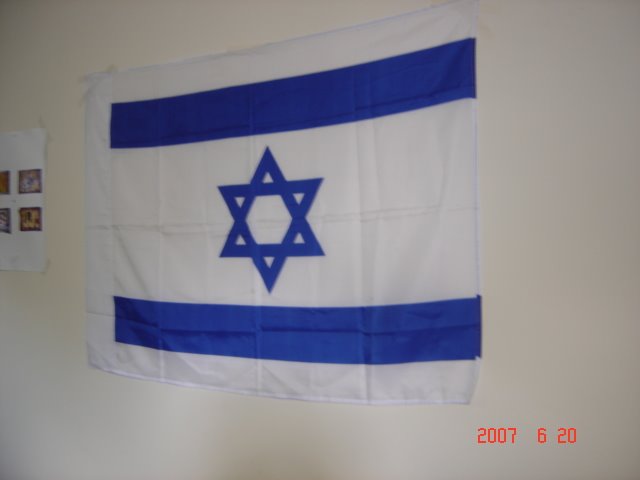Thursday, March 13, 2008
Parshas Vayikra
Rabino Aron Tendler
Summary of The Weekly Torah Reading:
Note: The Shabbos Torah Reading is divided into 7 sections. Each section is called an Aliya [literally: Go up] since for each Aliya, one person "goes up" to make a bracha [blessing] on the Torah Reading.
1st & 2nd & 3rd Aliyot: The instructions for offering a "Oleh" - burnt offering (fully consumed on the Alter) is detailed. This offering could be brought from a bull, or male sheep or goat. The less expensive "Oleh", using a Turtle Dove or common dove, is described. The Mincha, an offering made from baked, fried, or deep fried matzoh type crackers is detailed.
4th Aliya: The Korban Shlomim - the peace offering, brought from male or female cattle, sheep, and goats is described.
5th Aliya: This aliya describes this Korban Chatas - the sin offering. Three unique sin offerings are described:
1. When the High Priest sinned 2. If the King sinned 3. If the entire nation sinned because of a wrong ruling by the Sanhedrin - Hi gh Court. Note: A Korban Chatas could only be offered if the sin was unintentional.
6th & 7th Aliyot: The Korban Chatas of a commoner is detailed, as well as the specifics of the Korban Asham - the guilt offering. This Korban was offered in instances where intentional wrong doing was implicated; such as not fulfilling an assumed oath, or doing something questionable without first ascertaining the law. Additionally, a type of Asham was offered in instances of dishonesty and swearing falsely.
Summary of The Maftir:Maftir Zachor
This week, in addition to the regular Parsha, we read Parshas Zachor. Parshas Zachor is the 2nd of the four special Shabbosim preceding Pesach when additional portions are read from the Torah. The first special Shabbos was Parshas Shekalim. This week we read Zachor, and in a few weeks we will read Parah and Chodesh. There are set rules which determine when each of these additional Parshios is to be read. Parshas Zachor is always read on the Shabbos before Purim.
On Parshas Zachor, we read the additional Parsha found in Devarim, 25:17. As a nation, we were commanded to destroy the nation of Amalek. This nation came into existence at the same time as we did. Esav's son Elifaz had a son Amalek. Esav and Elifaz's legacy to Amalek was an undying hatred against the children of Yakov.
At the time of the exodus from Egypt, Amalek traveled hundreds of miles to ambush the newly freed nation in the hope of destroying them. We, as a nation, did not pose any threat to their sovereignty. They lived to the east of Canaan and were not among the Seven Nations occupying Eretz Yisroel. Nevertheless, their irrational hatred against Hashem and us compelled them to attack a harmless and seemingly defenseless nation. In the aftermath of their attack we were commanded to always remember the evil that is Amalek. It is the reading of this Parsha that is the fulfillment of this Biblical commandment. This mitzvah, according to most authorities, is not restricted by time and must be fulfilled by men and woman.
The Rabbi's selected the Shabbos before Purim for the fulfillment of this Mitzvah because Haman was a direct descendent of Amalek, and Mordecai was a direct descendent of King Saul. The entire story of Purim is directly linked to this Mitzvah and the missed opportunity of King Saul that we read about in the Haftorah.
Summary of The Haftorah:Haftorah ZachorShmuel I - 15:2
This week's Haftorah takes place 2,873 years ago. In the year 2883 - 878 b.c.e. King Shaul was sent by G-d to destroy the nation of Amalek. Agag was their king, and it was a singular moment in history when every member of Amalek was in one place at the same time. Shaul, as per Shmuel Hanavi's instructions, was successful in destroying Amalek. However, as the Haftorah clearly states, Shaul had mercy and allowed the king, Agag, to remain alive, as well as the captured cattle. The commentaries state that in the interim, Agag was able to impregnate a maidservant, from which the nation of Amalek would survive. Hashem told Shmuel that Shaul's neglect of His command to totally destroy Amalek must result in Shaul loosing the right to be king. Despite Shmuel's prayers for mercy, Hashem didn't relent, and Shmuel went to tell Shaul of G-d's punishment.
The connection to Purim is well documented. Haman is called, "the Agagi". He was a direct descendent of Agag. In ascer taining Hashem's mercy and justice, we are forced to acknowledge our limited understanding. The notion of killing men woman and children is thankfully foreign and abhorrent to us. Nevertheless, Shaul was commanded to eradicate the entire nation.
The Haftorah identifies Shaul's sin in not fulfilling G-d's commandment as misplaced mercy. Had he known that, 521 years later, his merciful act would result in the potential extermination of the entire Jewish people, Shaul would not have had mercy on Agag and the cattle. It is the responsibility of a king to think beyond the immediate and do what has to be done to guarantee the future of his nation. Being that no single human can ever guarantee the future, he has no choice but to listen to Hashem's commandments and do as he is told. That insures the future.
The message of Purim is the story of our Haftorah. Hashem works His miracles through the normal passage of time. Actions done today set in motion ripples in time that radiate far into the future.
May today's celebration of Purim set in motion the redemption of tomorrow!
Summary of The Weekly Torah Reading:
Note: The Shabbos Torah Reading is divided into 7 sections. Each section is called an Aliya [literally: Go up] since for each Aliya, one person "goes up" to make a bracha [blessing] on the Torah Reading.
1st & 2nd & 3rd Aliyot: The instructions for offering a "Oleh" - burnt offering (fully consumed on the Alter) is detailed. This offering could be brought from a bull, or male sheep or goat. The less expensive "Oleh", using a Turtle Dove or common dove, is described. The Mincha, an offering made from baked, fried, or deep fried matzoh type crackers is detailed.
4th Aliya: The Korban Shlomim - the peace offering, brought from male or female cattle, sheep, and goats is described.
5th Aliya: This aliya describes this Korban Chatas - the sin offering. Three unique sin offerings are described:
1. When the High Priest sinned 2. If the King sinned 3. If the entire nation sinned because of a wrong ruling by the Sanhedrin - Hi gh Court. Note: A Korban Chatas could only be offered if the sin was unintentional.
6th & 7th Aliyot: The Korban Chatas of a commoner is detailed, as well as the specifics of the Korban Asham - the guilt offering. This Korban was offered in instances where intentional wrong doing was implicated; such as not fulfilling an assumed oath, or doing something questionable without first ascertaining the law. Additionally, a type of Asham was offered in instances of dishonesty and swearing falsely.
Summary of The Maftir:Maftir Zachor
This week, in addition to the regular Parsha, we read Parshas Zachor. Parshas Zachor is the 2nd of the four special Shabbosim preceding Pesach when additional portions are read from the Torah. The first special Shabbos was Parshas Shekalim. This week we read Zachor, and in a few weeks we will read Parah and Chodesh. There are set rules which determine when each of these additional Parshios is to be read. Parshas Zachor is always read on the Shabbos before Purim.
On Parshas Zachor, we read the additional Parsha found in Devarim, 25:17. As a nation, we were commanded to destroy the nation of Amalek. This nation came into existence at the same time as we did. Esav's son Elifaz had a son Amalek. Esav and Elifaz's legacy to Amalek was an undying hatred against the children of Yakov.
At the time of the exodus from Egypt, Amalek traveled hundreds of miles to ambush the newly freed nation in the hope of destroying them. We, as a nation, did not pose any threat to their sovereignty. They lived to the east of Canaan and were not among the Seven Nations occupying Eretz Yisroel. Nevertheless, their irrational hatred against Hashem and us compelled them to attack a harmless and seemingly defenseless nation. In the aftermath of their attack we were commanded to always remember the evil that is Amalek. It is the reading of this Parsha that is the fulfillment of this Biblical commandment. This mitzvah, according to most authorities, is not restricted by time and must be fulfilled by men and woman.
The Rabbi's selected the Shabbos before Purim for the fulfillment of this Mitzvah because Haman was a direct descendent of Amalek, and Mordecai was a direct descendent of King Saul. The entire story of Purim is directly linked to this Mitzvah and the missed opportunity of King Saul that we read about in the Haftorah.
Summary of The Haftorah:Haftorah ZachorShmuel I - 15:2
This week's Haftorah takes place 2,873 years ago. In the year 2883 - 878 b.c.e. King Shaul was sent by G-d to destroy the nation of Amalek. Agag was their king, and it was a singular moment in history when every member of Amalek was in one place at the same time. Shaul, as per Shmuel Hanavi's instructions, was successful in destroying Amalek. However, as the Haftorah clearly states, Shaul had mercy and allowed the king, Agag, to remain alive, as well as the captured cattle. The commentaries state that in the interim, Agag was able to impregnate a maidservant, from which the nation of Amalek would survive. Hashem told Shmuel that Shaul's neglect of His command to totally destroy Amalek must result in Shaul loosing the right to be king. Despite Shmuel's prayers for mercy, Hashem didn't relent, and Shmuel went to tell Shaul of G-d's punishment.
The connection to Purim is well documented. Haman is called, "the Agagi". He was a direct descendent of Agag. In ascer taining Hashem's mercy and justice, we are forced to acknowledge our limited understanding. The notion of killing men woman and children is thankfully foreign and abhorrent to us. Nevertheless, Shaul was commanded to eradicate the entire nation.
The Haftorah identifies Shaul's sin in not fulfilling G-d's commandment as misplaced mercy. Had he known that, 521 years later, his merciful act would result in the potential extermination of the entire Jewish people, Shaul would not have had mercy on Agag and the cattle. It is the responsibility of a king to think beyond the immediate and do what has to be done to guarantee the future of his nation. Being that no single human can ever guarantee the future, he has no choice but to listen to Hashem's commandments and do as he is told. That insures the future.
The message of Purim is the story of our Haftorah. Hashem works His miracles through the normal passage of time. Actions done today set in motion ripples in time that radiate far into the future.
May today's celebration of Purim set in motion the redemption of tomorrow!




